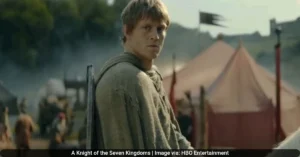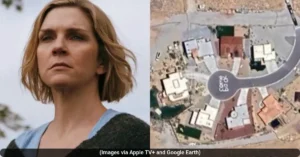The latest episode of Outlander: Blood of My Blood season 1, titled “Luceo Non Uro,” has brought the Jacobite cause into sharp focus. The series, set in 1714 Scotland, explores the political tensions and clan rivalries that defined the era. As the plot moves closer to the 1715 Jacobite uprising, understanding the historical context of the Jacobites becomes essential for viewers. This article breaks down who the Jacobites were and how their story is woven into the narrative of Outlander: Blood of My Blood.
The Historical Jacobites: A Basic Guide
The Jacobites were supporters of King James II of England (also known as James VII of Scotland) and his descendants after he was overthrown in the 1688 Glorious Revolution. The name “Jacobite” comes from the Latin word Jacobus, meaning James. They believed that the Stuart family had a divine right to rule Britain, and they opposed the Protestant monarchs who took the throne after James, such as William of Orange and the Hanoverian dynasty.
Jacobitism was particularly strong in Scotland, Ireland, and parts of northern England. In Scotland, many Highland clans supported the Jacobite cause due to their traditional loyalty to the Stuarts and their dissatisfaction with the union of Scotland and England in 1707. The movement led to several armed rebellions, including the major uprisings in 1715 and 1745, which aimed to restore the Stuart monarchy.
Jacobites in Outlander: Blood of My Blood Episode 7
In “Luceo Non Uro,” the Jacobite movement becomes a central plot point. The episode features a secret Jacobite meeting at House Nairne, where characters like Dougal MacKenzie and Murtagh FitzGibbons are involved in discussions about supporting the Stuart claim to the throne. This meeting highlights the dangerous political divide between Jacobites (who supported a Catholic Stuart king) and Loyalists (who backed the Protestant Hanoverian rule).
The episode shows how Jacobite sympathies could tear families and clans apart. For example, Ellen MacKenzie is caught between her family’s Jacobite leanings and her engagement to Malcolm Grant, who comes from a Loyalist family. The tension escalates when British soldiers raid the meeting, accusing those present of treason. This accurately reflects the risks faced by Jacobites, as being caught could lead to execution or imprisonment.
The show portrays the Jacobite cause as a secretive and high-stakes movement. As one character notes, “The question of whether to fight for the Hanoverian King George II or to stand on the side of the exiled James Francis Edward Stuart was a weighty one.”
Key Jacobite Figures in History and the Show
The Jacobite cause was led by several key figures. James Edward Stuart (the Old Pretender) was the son of James II and the first Stuart claimant to the throne after the Glorious Revolution. His son, Charles Edward Stuart (Bonnie Prince Charlie), led the famous 1745 uprising, which ended in the devastating defeat at the Battle of Culloden.
In Outlander: Blood of My Blood, the Jacobites are represented by characters like Dougal MacKenzie, who is shown recruiting support for the uprising. The series also introduces historical elements, such as the Jacobite white rose symbol, which was used by supporters to identify each other secretly. The show’s depiction of clan leaders weighing the risks of supporting the Jacobites is consistent with historical accounts, where many Scots faced difficult choices between loyalty and practicality.
A Series of Rebellions
Over the course of 60 years, the Jacobites made several attempts to restore the Stuarts to the throne. The major uprisings included:
- The Jacobite Rising of 1689-1690: Led in Scotland by Viscount Dundee, it included the Battle of Killiecrankie but ultimately failed to gain widespread support .
- The Fifteen Rebellion (1715): A serious uprising led by the Earl of Mar in support of James Francis Edward Stuart, the “Old Pretender.” It culminated in the indecisive Battle of Sheriffmuir and a defeat at Preston, leading to James’s flight back to France .
- The Nineteen Rebellion (1719): A smaller rising aided by Spain, which was quickly defeated at the Battle of Glenshiel .
- The Forty-Five Rebellion (1745): The most famous and final rising, led by James’s grandson, Charles Edward Stuart, the “Young Pretender” or Bonnie Prince Charlie. This is the rebellion depicted in the main Outlander series. Charles initially found success, capturing Edinburgh and winning the Battle of Prestonpans. He marched his army into England, reaching as far south as Derby. However, a lack of promised English and French support forced a retreat to Scotland. The rebellion was finally crushed in less than an hour at the brutal Battle of Culloden Moor in 1746, which ended the Jacobite cause for good and led to severe reprisals against Highland culture .
Fan Reactions and Historical Accuracy
Fans of the show have praised its attention to historical detail. The portrayal of Jacobite meetings and the political tension of the era adds depth to the story. Social media reactions include comments like:
“Jacobite Scotland this is a very nice event. If we were to repeat this, I would recommend inviting the Royal Écossais to one of the locations where they actually participated in a battle in ‘The Forty-five.’”
The series stays true to the fact that Jacobitism was not just a political movement but also a cultural one, with symbols, songs, and rituals that united supporters. However, like all historical dramas, Outlander: Blood of My Blood takes some creative liberties. For example, the character of Simon Fraser (Lord Lovat) is based on a real historical figure who was known for switching sides between the Jacobites and the British government. The show explores his cunning nature, which aligns with historical records.
The Jacobite Legacy in Scotland
The Jacobite rebellions left a lasting impact on Scottish history. The defeat of the 1745 uprising led by Bonnie Prince Charlie resulted in harsh punishments for Highlanders, including the banning of tartans and the dismantling of the clan system. Despite this, Jacobitism became a symbol of Scottish resistance and identity. Today, the Jacobite era is remembered through museums, festivals, and cultural events.
The Jacobite Festival 2025, for example, is set to take place from August 15 to 24 at various locations across Scotland. This festival will feature events like battlefield tours, reenactments, and exhibitions highlighting Jacobite history. Such events show how the legacy of the Jacobites continues to captivate people today.
How Outlander: Blood of My Blood Uses Jacobite History
Outlander: Blood of My Blood uses the Jacobite conflict as a backdrop for its story of love, loyalty, and betrayal. The series shows how the political unrest of the time affected everyday people, from clan leaders to ordinary farmers. The show’s attention to detail in costumes, settings, and historical events helps bring this era to life for modern audiences.
The series also highlights the emotional stakes of the Jacobite cause. For characters like Ellen MacKenzie, supporting the Jacobites could mean risking everything—family, freedom, and even life. This personalizes the historical conflict, making it relatable for viewers.
Also Read: Outlander: Blood of My Blood Season 1 Episode 7 Ending Explained: Did Julia Find Henry?








